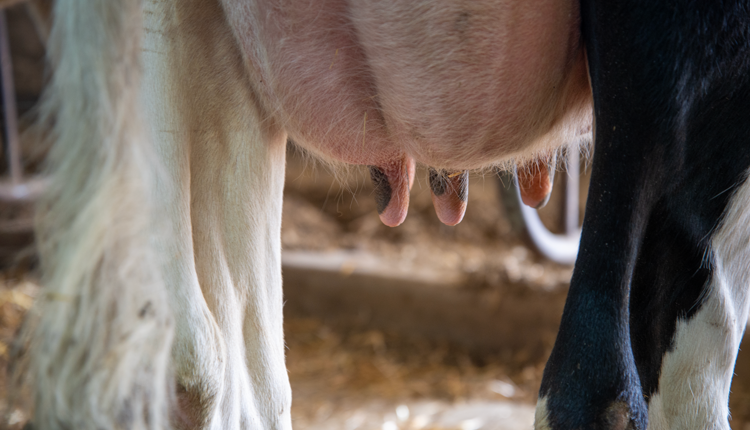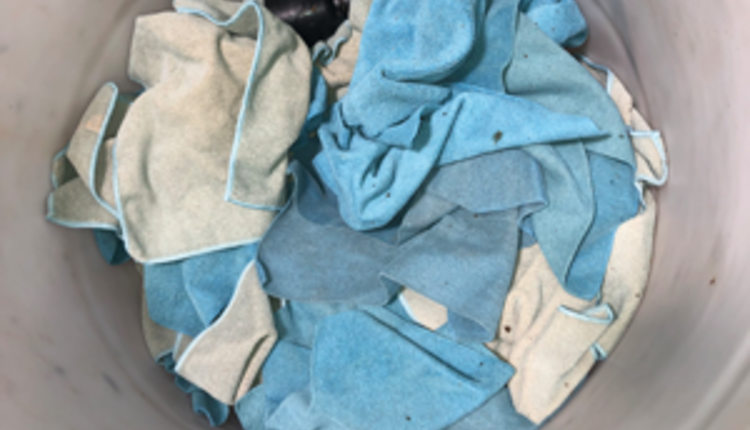The authors are with Quality Milk Production Services, Cornell University.

In addition, studies show that most people, when they do wash their hands, only allow for approximately 6 to 8 seconds of soap contact time to remove and kill bacteria present. As we learned from COVID-19, proper handwashing is essential for prevention of disease transmission and also in preventing infections and foodborne illness outbreaks.
Adequate premilking teat disinfection, and post milking teat disinfection for that matter, is like handwashing. It can aid in the prevention of intramammary infections, will improve milk quality, and directly affects overall teat health.
When it comes to prepping teats for milking, predip is an effective way of reducing the bacterial population that adhere to teat skin between milkings. When the teat is immersed in teat dip, there is bacterial uptake of the sanitizer, leading to death of the organism. Thus, a proper teat predipping program can reduce the incidence of new infections by as much as 50% to 90%.
Put in the time to kill bacteria
Each sanitizer has a mode of action that it takes against the bacteria residing on the teat skin. When a microbe comes into contact with a sanitizer, it is destroyed by chemical action using an oxidation-reduction mechanism that compromises cell structure. Parts of the bacterial cell can be denatured by the sanitizer, causing cytoplasm coagulation, disruption of cell membrane permeability, loss of cytoplasmic contents, and destruction of structural proteins of the cell. Ultimately, the cell wall is broken down and the bacteria are destroyed.
But killing bacteria takes time.
When sanitizing teat ends, we need to allow time for bacteria to take up the sanitizer before they will die. This is called contact time. It is recommended to fully coat at least three-quarters of the teat barrel, in addition to the teat end, and allow the dip to remain for a minimum of 30 seconds of contact time.
At Cornell University’s Quality Milk Production Services (QMPS), we routinely test a variety of teat dips for different dairy industry companies to ensure the quality of their products and to evaluate the killing ability of their teat dips over time. We subject major mastitis pathogens to samples of teat dips at 0 seconds, 15 seconds, 30 seconds, 45 seconds, and 60 seconds.
At 15 seconds of contact time, we generally see only about 50% to 60% of bacteria killed, whereas at 30 seconds, we will see approximately 99% bacterial death. A contact time of 30 seconds is essential for reducing bacteria populations on teat ends.
Teat dip coverage and wiping
Proper teat dip coverage requires that at least three-quarters of all sides of the teat barrel and the teat end are coated with teat dip. To check whether all sides of the teat are being reached, consider using the paper towel test.
To perform this, fold a paper towel in half. Wrap the towel around the teat after dip has been applied. Unwrap the teat and observe if there are any dry areas along the impression of the teat on the towel. If a dry area is observed, bacteria still present on that section of the teat can lead to intramammary infections.
In addition to properly killing bacteria using a predip, it is also important to remove bacteria and debris by mechanically wiping teat ends clean and dry. Many milkers will wipe and dry the barrel of the teat in a downward motion but not focus on the teat end. Ensure that the teat end is wiped free of all manure, dirt, and debris. The rougher the teat end is, the harder this can be to accomplish.
Always use a single-service towel to wipe teats clean and dry. In other words, one towel per cow. Sharing towels between cows is an easy way to transfer contagious mastitis pathogens among herdmates; it is much like blowing your nose and sharing your tissue with someone else.
Perform your own test
How do you know if your teat ends are still dirty after prep? You can follow these steps to check teat end cleanliness on your farm:
- Follow the milking prep farm protocol.
- Acquire clean gauze, alcohol wipes, or a white towel.
- After prep but before unit attachment, wipe each teat end with gauze or a towel.
- Observe the piece of gauze for debris, manure, skin, and teat dip. If there is dirt on your gauze, there is still dirt on your teats, which can lead to mastitis.
- Repeat on multiple cows with employees prepping.








